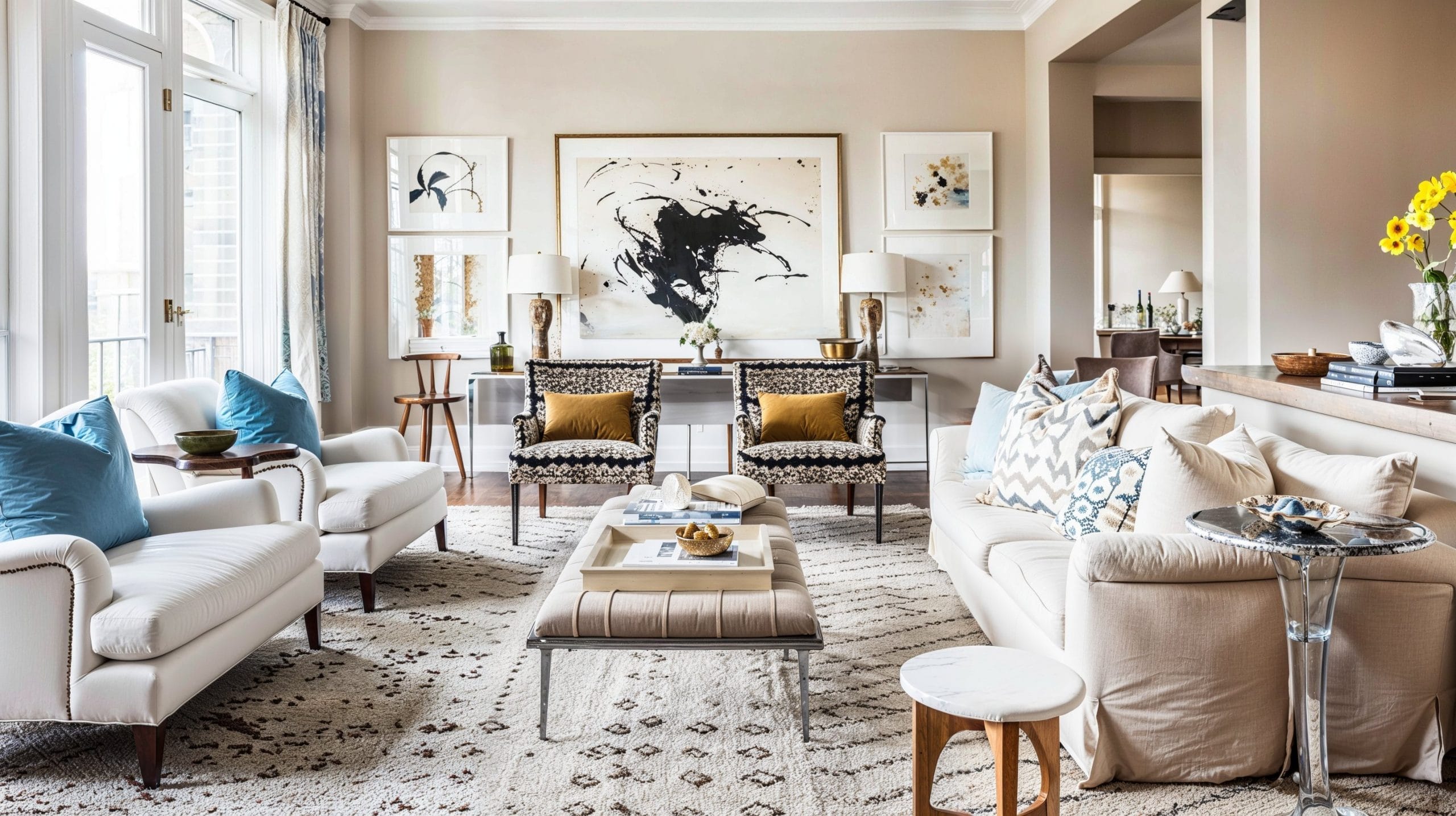Explore premium miami luxury interior design for an upscale and refined atmosphere.
Explore premium miami luxury interior design for an upscale and refined atmosphere.
Blog Article
Transform Your Home With Crucial Principles of Interior Layout and Visual Appeals
The art of transforming your home via the important principles of interior decoration and visual appeal requires a thoughtful method that harmonizes shade, equilibrium, and spatial awareness. By comprehending the impact of color theory and the importance of texture and patterns, one can create areas that are not only visually appealing however likewise deeply individual. Accomplishing this stability includes even more than plain decoration; it includes a strategic plan and a keen understanding of exactly how each aspect engages within a space. As we discover these fundamental ideas, take into consideration how they could redefine your understanding of home and individual expression.
Recognizing Shade Theory
Understanding the concepts of shade concept permits designers to create areas that resonate psychologically with occupants while fulfilling practical requirements. Each group plays a crucial role in establishing consistency within a space.
The psychological impact of colors is profound; cozy colors such as reds and oranges evoke power and heat, while great tones like blues and greens advertise peace and serenity. Additionally, the use of complementary colors boosts visual interest, developing striking contrasts that can raise a room's charm.
Neutral shades, on the other hand, function as a flexible background, enabling other style aspects to radiate. It is necessary to take into consideration variables such as illumination and the area's purpose when choosing a color combination, as these can alter the perception of colors throughout the day.
Eventually, a well-considered color design can change a room, cultivating a sense of comfort and style that aligns with the residents' preferences. Mastery of shade theory is, as a result, a crucial ability for any kind of interior designer aiming to create unified and inviting environments.
Accomplishing Balance in Style
Exactly how can developers achieve a feeling of stability in their spaces? Achieving balance in layout is fundamental to developing harmonious insides.
Unbalanced balance, on the various other hand, relies upon differing elements that still attain a natural look. This method permits even more vibrant and informal setups, offering passion while maintaining balance. By carefully selecting differing dimensions, shades, and structures, developers can create a visually engaging area that really feels balanced yet energised.
Radial balance highlights a main prime focus with elements radiating exterior. This style is commonly seen in circular formats, where furnishings and design develop a natural border that attracts the eye inward.
Eventually, attaining balance requires thoughtful consideration of range, proportion, and the partnerships between elements. miami interior design. By masterfully using these equilibrium principles, developers can change rooms right into environments that feel both aesthetically pleasing and functionally unified, boosting the total experience for occupants
Importance of Spatial Awareness

A keen sense of spatial recognition permits developers to identify focal points within a space, guiding the audience's interest to vital functions while keeping an overall sense of unity. It additionally aids in the critical placement of illumination, which can substantially influence the perception of area and state of mind. Comprehending spatial connections makes it possible for the designer to cater to the details requirements of residents, making certain that each area offers its designated function without jeopardizing aesthetics.
Ultimately, spatial awareness is vital for making the most of the capacity of any interior area. By meticulously taking into consideration the interplay between measurements, format, and function, designers can create atmospheres that not only satisfy functional needs but additionally stimulate a sense of convenience and appeal, boosting the overall living experience.
Incorporating Texture and Patterns
Accepting a diverse variety of structures and patterns can significantly enhance the aesthetic and responsive charm of an indoor area. The calculated use of various materials-- such as timber, metal, fabric, and stone-- develops deepness and interest, making a room feel extra inviting and vibrant. Integrating smooth surface areas with harsh appearances can establish an equilibrium that attracts the eye and involves the detects.
When including patterns, consider both scale and repetition. Large patterns can serve as prime focus, while smaller, refined designs can enhance other components without frustrating the area. Layering patterns, such as pairing floral paddings with striped tosses, includes intricacy and a feeling of consistency if executed thoughtfully.
It is also crucial to maintain a cohesive color combination, ensuring that structures and published here patterns collaborate instead than complete for interest. By picking a couple of key appearances and patterns, you can create a linked visual that shows your individual design while enhancing the general setting of the space. Ultimately, the careful consolidation of these components can change a mundane room into an advanced setting abundant with personality and heat.
Personalizing Your Area
Creating a space that mirrors your personality is essential to achieving a really welcoming setting. Personalization in interior decoration allows you to instill your distinct design and interests right into your home, transforming it from a mere sanctuary right into a shelter that speaks with that you are. Begin by picking a shade scheme that reverberates with your emotions-- vibrant colors can invigorate, while soft tones supply tranquility.
Integrate artwork and decor that mirror your passions, whether it be travel, nature, or abstract principles. Showing individual collections, such as publications, photos, or keepsakes, can stimulate valued memories and develop centerpieces within a room. Furthermore, think about personalizing useful items, like upholstered furniture, to straighten with your visual preferences.

Conclusion
To conclude, the transformation of a home with the crucial principles of interior decoration and aesthetic appeal demands an extensive understanding of shade concept, equilibrium, spatial awareness, structure, and personalization. Each component adds considerably to producing an unified and useful living setting - luxury interior design. By thoughtfully integrating these principles, individuals can improve the aesthetic charm and psychological vibration of their rooms, inevitably fostering a home that reflects unique identities while offering comfort and functionality
Report this page